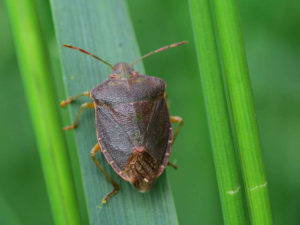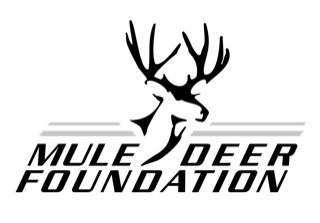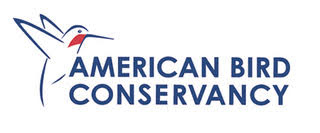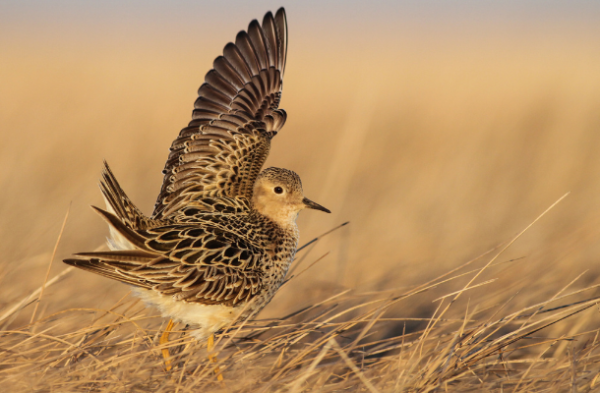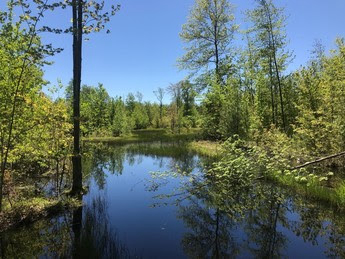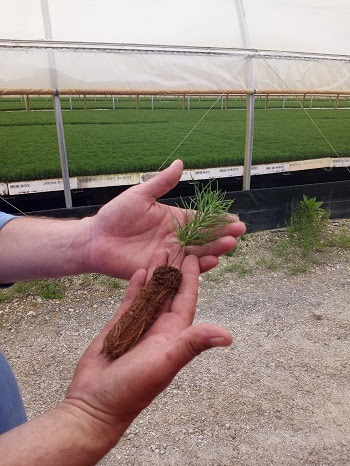By Glen Wunderlich
Charter Member Professional Outdoor Media Association
Connecting with nature takes on many forms and many of us go to great lengths to do so. Although it’s a never-ending process to actively participate in managing wildlife habitat, and thus the fauna that live there, we do it to benefit wildlife. An underlying benefit that comes with the territory is that we benefit ourselves at the same time.
Spring is a time to celebrate our emergence from months of indoor hibernation and the renewal of our spirits. Previous year’s food plots of turnips have either been devoured by whitetail deer or they’ve died a natural death and returned to earth as organic matter.
Weeds, on the other hand, are already developing their indigenous intent to take over the landscape. It’s inevitable unless we “interfere.”
This past dry spring presented an opportunity to work up some ground that typically remains too wet in most years. By mid-May the piece of land was dry enough to pull a disk harrow through the heavy soil in an effort to chew up the pesky weeds. It didn’t go well on the first pass with the light-duty, 6-foot disk, but the results were promising enough to yield some hope. As the soil dried along with the roots of the weeds, I kept up the disking process through the summer in preparation for a brassica seeding operation in late summer.1948 Ford 8N Disk Harrow Rips Ground – YouTube
One thing I’ve learned over the years is that if one step in the planting and growing process is minimized or skipped, it usually means failure. And, failure is spelled “weeds.” With that mentioned, things were looking great.
I added lime to increase the PH level of the soil months in advance of planting, so the lime could break down and do its job. Then a healthy dose of fertilizer was applied with a broadcast spreader hitched to an ATV – again, a month or so ahead of planting.
Finally, it was time to plant the tiny seeds that would feed a variety of wildlife. I diligently set the hand-seeder chute so as not to disperse too many brassica seeds, which can be a total waste of time, energy, and money. I walked the land back and forth, all the while cranking the handle and spreading the nearly invisible seed. Now, if I just had the means to water the field.
The first of August is a natural time for late-summer planting with heavy dew most days and periodic rain. But, day after day of hot, dry weather in the upper 80s to even 90 degrees was too much for the fragile seed. Although the dew gave the seed enough moisture to germinate, it couldn’t survive without a drink. After nine straight days of above average temperatures and no rain, I eventually lost the food plot to Mother Nature.
I thought about replanting brassicas but as the season progressed, it would have been futile. There simply was not enough growing season left for any meaningful growth, so I decided to plant clover instead. Although it was still too late for clover to develop as a food source in early autumn, the perennial mixture would develop nonetheless and be there in springtime – a good alternative and a way to save the investment in time and materials.
Off to the farm store for clover seed I went. There, I found the large bins of seed empty! The Covid craziness had broken the supply chain. However, as luck would have it, I found a vendor at the Mid-Michigan Old Gas Tractor Show selling Ladino clover seed and purchased a few pounds.
Already late August, I put the hand-spreader into action again, after scratching the soil’s surface with a light-duty, slicing aerator pulled behind the ATV. Through it all, I’m happy to report the persistence has paid off. Recent rains have me smiling, once again, as the tiny legume plants are flourishing and sure to be nourishment when it is needed most next spring.
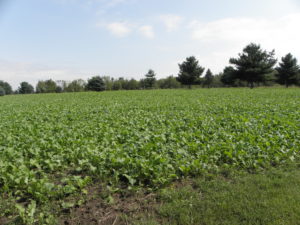
Turnips and Clover Food Plot
While we may deem the effort of planting food plots as one of charity for the good of the animal kingdom, there is also a certain amount of selfishness that gets satisfied in our pursuit of happiness. Own it. Live it. Love it. Hunting season is here.

